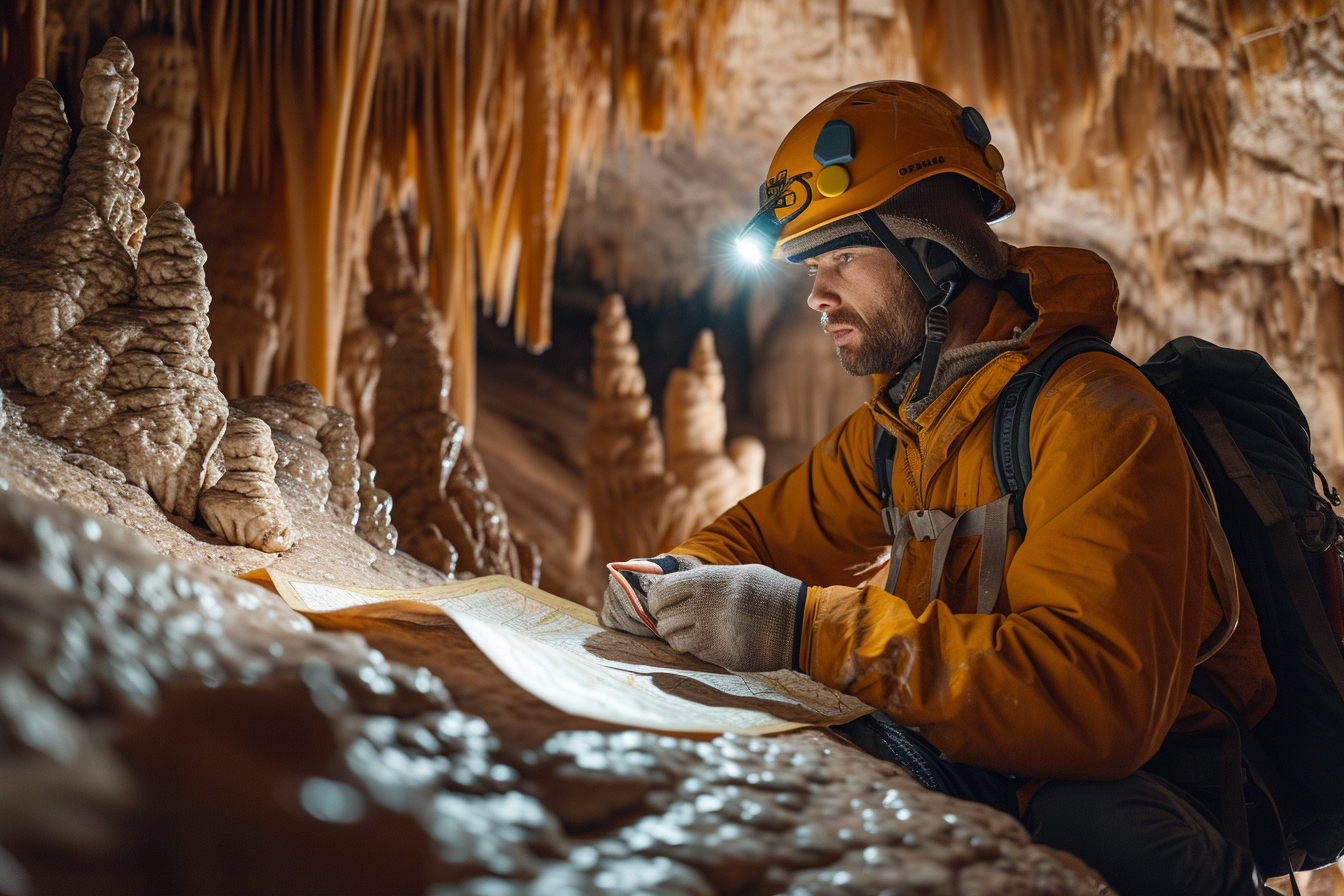Caving, also known as spelunking, is an exhilarating activity that allows adventurers to explore the hidden depths of the earth’s underbelly. For those captivated by the allure of the subterranean world, embarking on a caving journey promises an unforgettable experience filled with awe-inspiring natural formations, ancient mineral deposits, and the thrill of discovering uncharted territories. Yet, to navigate this complex environment safely, beginners must prepare diligently. This web article delves into essential tips designed to equip neophytes with the knowledge for a successful caving excursion.
Understanding the world beneath your feet
The foundation of a successful caving adventure lies in comprehension. Caves are naturally occurring voids in the earth, usually formed by water erosion in soluble rock such as limestone. The labyrinthine passages and expansive chambers one might encounter are testament to eons of geological activity.
Safety in this environment demands respect for the cave’s delicate ecosystem. Bats, blind fish, and unique invertebrates are some of the biota that inhabit these places, often within fragile habitats. Preservation of cave environments is not only an ethical responsibility but often a legal requirement.
Equip yourself with the right gear
Gear is your first line of defense in the unpredictable environment of a cave. Essential equipment includes:
- Helmet with Headlamp: Rock falls and low ceilings mean a sturdy helmet is vital, with a mounted headlamp to free up your hands.
- Appropriate Footwear: Durable, water-resistant boots with good tread enhance grip on slippery surfaces.
- Gloves: Protect your hands from sharp rocks and cold conditions.
- Clothing: Wear layers that insulate even when wet, such as synthetics or wool. Avoid cotton.
- Backup Light Sources: Carry spare batteries or additional lights, as lack of visibility can be life-threatening.
- Food and Water: Energy-rich foods and ample hydration are key for maintaining energy levels.
- First-Aid Kit: Be ready to address minor injuries on the spot.
Quality gear ensures comfort and enhances the odds of a smooth experience.
Mastering caving techniques

Basic skills play a pivotal role in navigating subterranean obstacles.
Maneuvers and movements
Moving in a cave is not like walking on a trail. Crawling, climbing, and squeezing through narrow passages require both physical fitness and technique proficiency.
- Crawling: Practicing low crawls and belly crawls can make traversing tight spaces easier.
- Climbing: Learn to use handholds and footholds efficiently, conserving energy for the exploration ahead.
Conservation of energy is particularly important in caving to prevent exhaustion.
Disturbance minimization
Navigating caves with a minimal impact approach protects both the caver and the cave environment.
- Stick to Established Paths: Reduce your impact on cave formations by following existing routes.
- Avoid Touching Formations: Oils from human skin can damage delicate mineral structures and impede their growth.
Remember, leaving no trace ensures the cave will remain unspoiled for generations to come.
Learning cave navigation and map reading
Orientation skills can be the difference between a rewarding adventure and a distressing ordeal. Understanding cave maps and using a compass are vital skills:
- Cave Maps: Familiarize yourself with symbols and conventions used in speleological cartography.
- Compass Skills: Refine your abilities in compass navigation to orient yourself underground.
Good navigation eliminates the risk of getting lost, which is a serious hazard in caving.
Prepare physically and mentally
Caving can be physically demanding and mentally taxing. Stamina and agility aid in navigating the various physical challenges. Mental preparation is just as crucial:
- Build Endurance: Cardiovascular exercises, strength training, and flexibility workouts can prepare your body for the exertion of caving.
- Cultivate a Calm Demeanor: Tight spaces and dark environments can be intimidating. A calm mindset will help you through challenging situations.
Physical and mental readiness enhances your ability to face the unexpected.
Join a caving club or go with an experienced guide
Embarking on your first few caving journeys with seasoned guides or local caving clubs can be invaluable. These experienced individuals provide mentorship, teach you advanced techniques, and help you gain experience safely. Friendship and camaraderie found within these groups also enrich the caving experience.
Guides act as your link to the local caving community and can offer insight into the best local sites.
Understand the risks and how to mitigate them
Acknowledgment of the inherent risks in caving is a step towards preventing potential incidents. Hazards range from falls and flooding to hypothermia and disorientation.
- Emergency Plans: Always inform someone about your caving plans and expected return time.
- Stay Together: Cave with a buddy, maintain visual or verbal contact, and never stray from the group.
- Weather Awareness: Be cognizant of the weather and its effects on cave conditions.
- Skills Training: Learn basic rescue and survival skills tailored for cave environments. Courses in vertical caving, swift-water crossing, and first aid are especially pertinent.
A comprehensive safety approach minimizes risks and enables a quick response if things go awry.
Respect cave conservation ethics
Conservation ethics ensure that the spelunking community can continue to enjoy and study caves for years to come.
- Clean Caving Practices: Leave no waste behind and clean your gear to prevent the spread of diseases like White-Nose Syndrome in bats.
- Educate Yourself: Learn about the importance of conservation efforts and participate in events that promote cave preservation.
Your actions set an example for the rest of the caving community and help protect these natural wonders.
Embarking on your first caving journey might seem daunting, but with the right preparation, equipment, and mindset, you will be well-equipped to safely enjoy the fascinating world that awaits beneath the surface. Remember that caving is not just about the thrill of exploration, but also about understanding and preserving the underground ecosystem. Every trip underground is an opportunity to learn and grow as a caver. So gear up, get educated, and dive into the awe-inspiring realm of caving. With each descent, the mysteries of the subterranean will reveal themselves, offering a unique adventure that’s as rewarding as it is challenging.